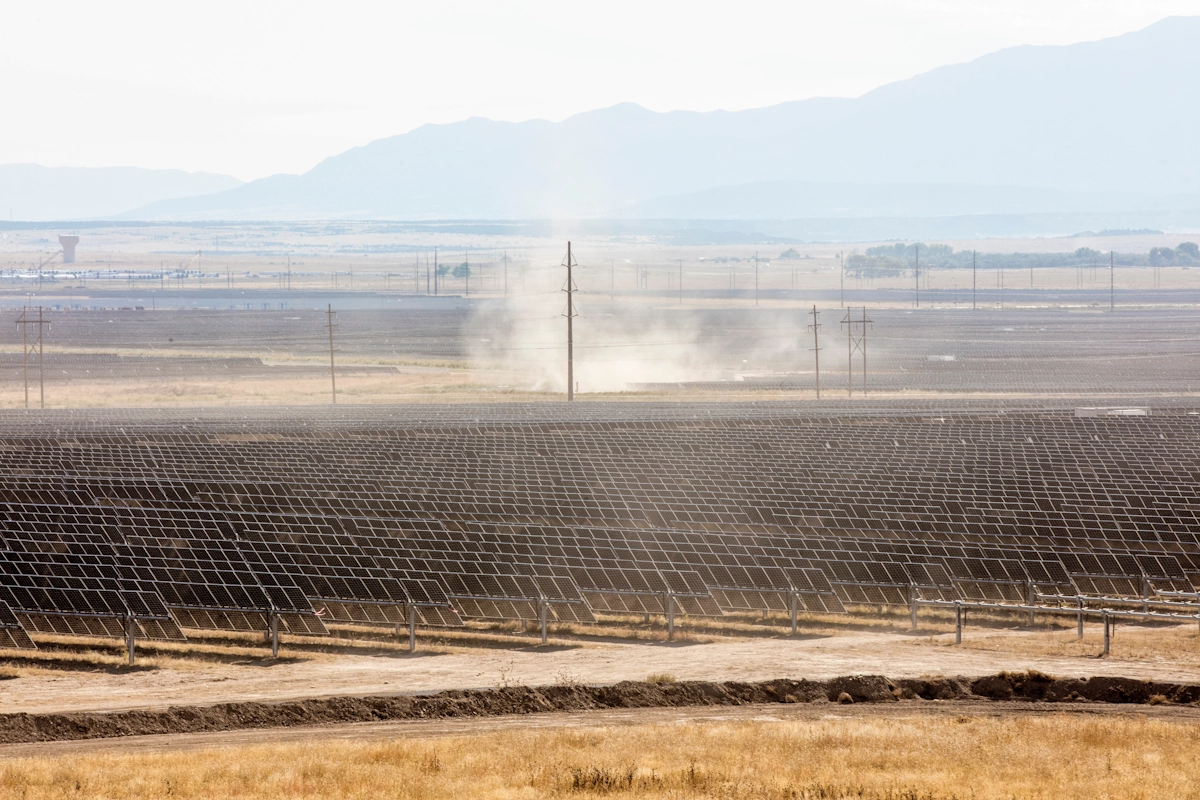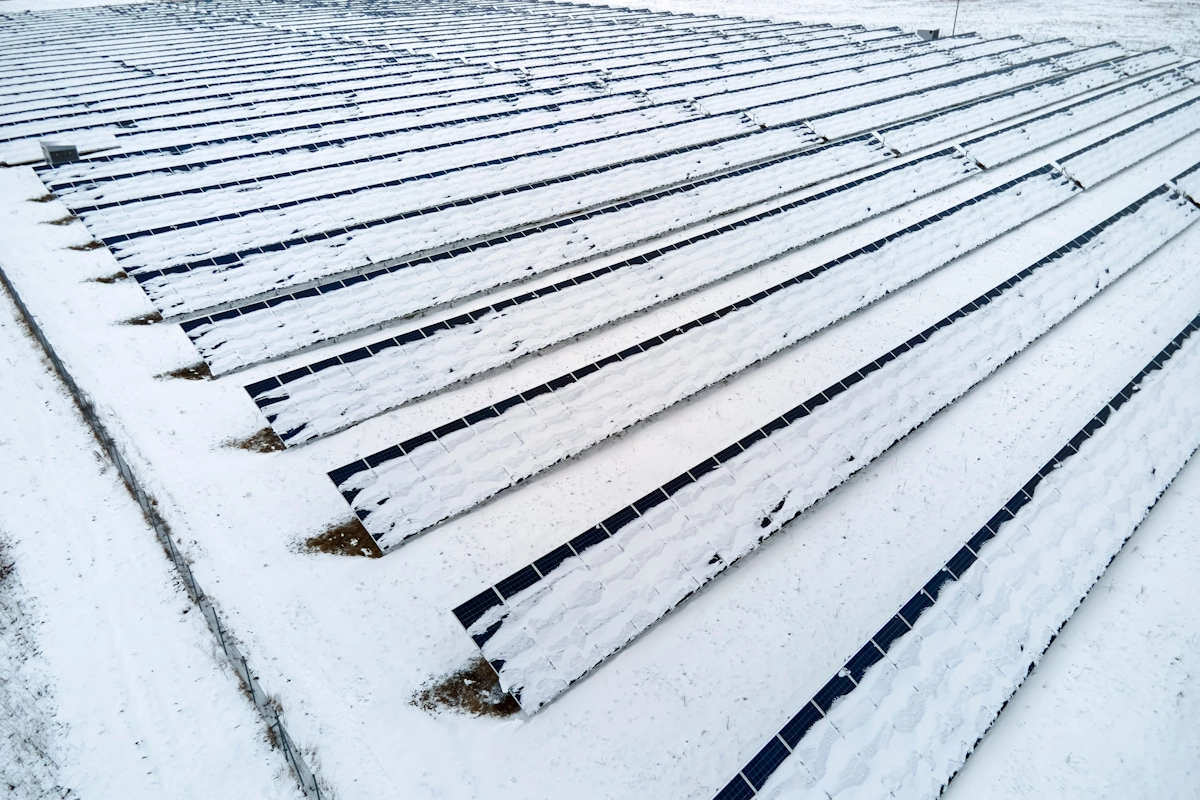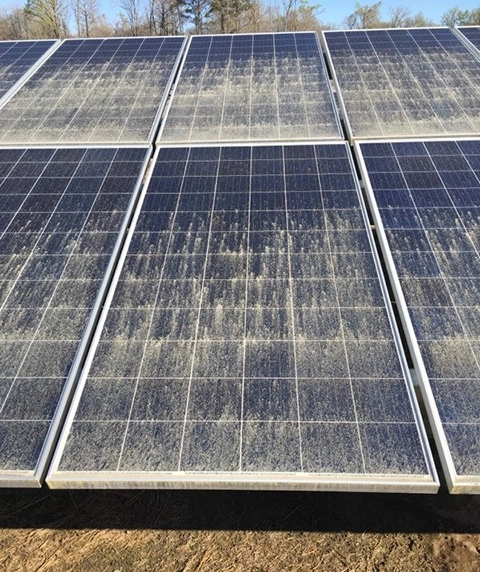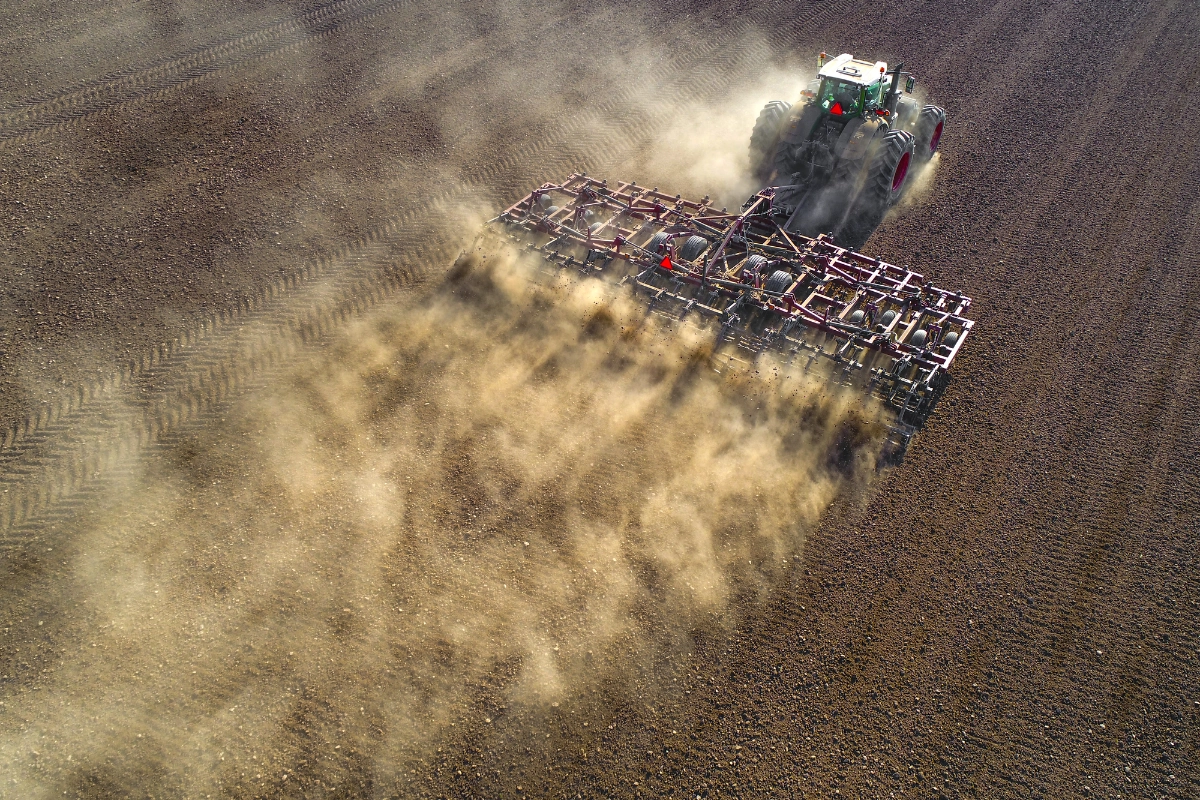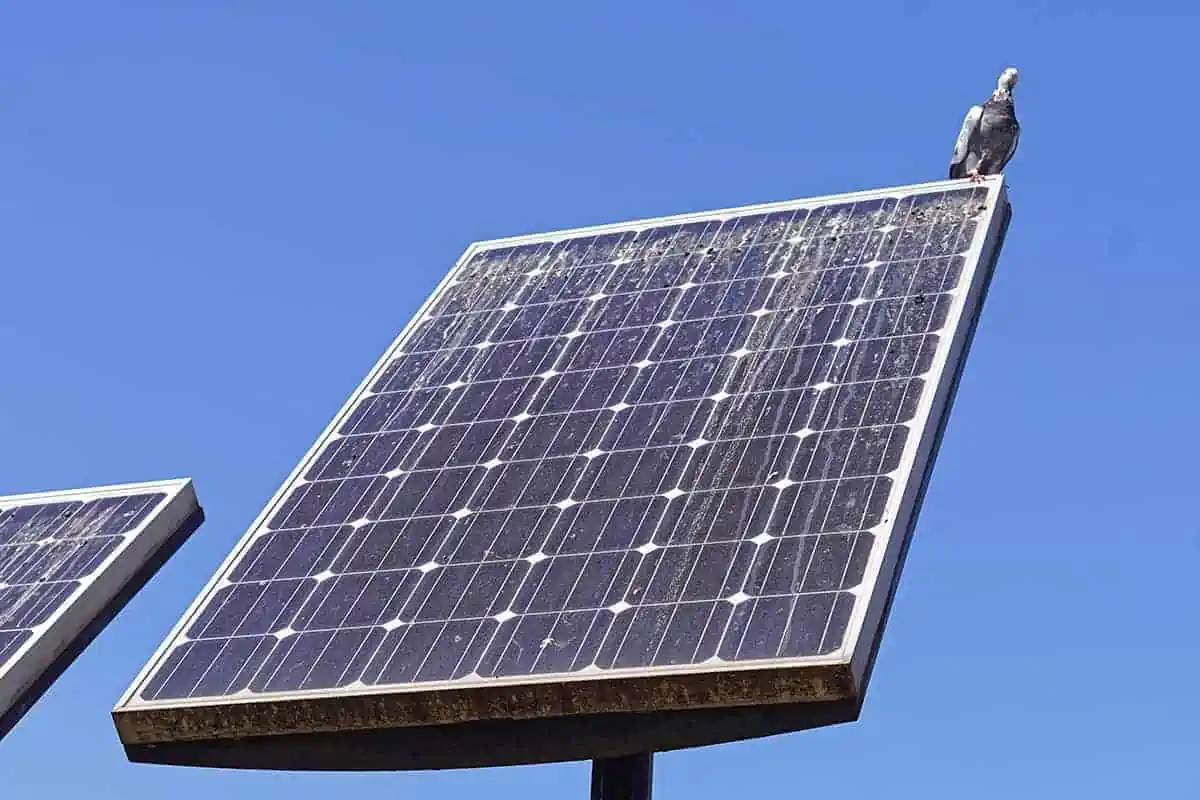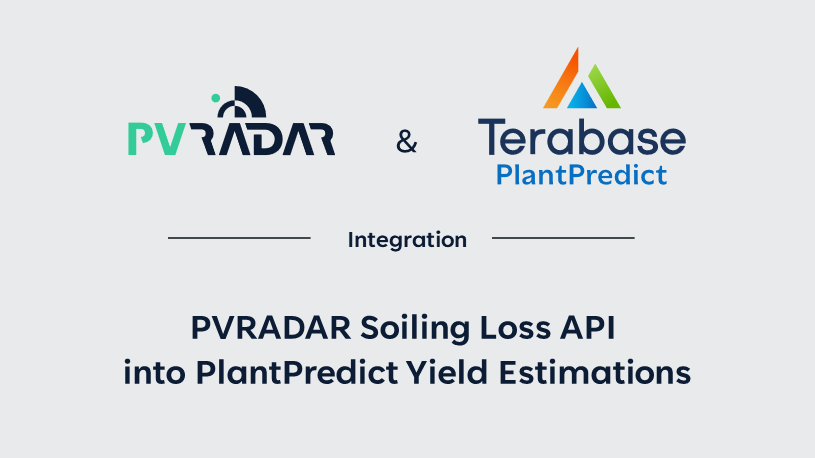
PVRADAR integrates it’s soiling loss API into Terabase PlantPredict’s yield predictions
Terabase PlantPredict is a leading platform for layout optimization and energy yield prediction. Users can now easily import 12 average monthly soiling loss factors for any location in the USA as inputs for the yield estimation.
This P50 estimate considers typical dust conditions for the area, while excluding localized influences from human activity and birds. It assumes no mechanical cleaning and focuses on the early years of production, thus excluding the long-term accumulation of organic soiling such as pollen.
For a more detailed soiling assessment for locations worldwide, including year-on-year variability, long-term effects, P90 and P99 estimates, and optimal cleaning schedules, we offer our PVRADAR Platform.
Types of Soiling
Soiling refers to the accumulation of substances or materials blocking part of the incoming irradiance and thereby reducing the electrical output of PV modules. Soiling losses vary by location, influenced by climatic conditions, vegetational cycles, human activity, and other factors, and usually result from the combined effect of various pollutants.
Climatic effects

Dust
Dust is the primary source of soiling in dry and arid environments, such as deserts. Originating from mineral sources, dust can be effectively cleaned by rain. However, after extended dry periods, losses can be significant.
Snow
Snow soiling occurs when snowfall covers PV modules. Although this type of soiling can be severe, it is typically short-lived because the snow tends to slide off, melt, or be blown away by the wind. The impact of snow soiling is highly dependent on the orientation and mounting structure of the modules. While cleaning machines can remove snow, such an approach is usually not cost-effective.
Pollen
Pollen soiling, caused by nearby vegetation, is highly seasonal. Although rain can wash away some of the pollen, a significant portion may adhere to the modules in the presence of high humidity, forming persistent layers that require wet cleaning. Initially, the impact of pollen soiling may be minimal, but it can accumulate over the years, leading to a substantial reduction in production efficiency.
Agriculture
Industrial and agricultural activities can create super-localized soiling effects, which change over time as land use evolves. These effects are challenging to predict and must be factored in by engineers. Other examples of localized soiling sources include livestock, mines, and unpaved roads.
Birds
Bird droppings is a form of highly localized soiling that is very difficult to predict. Bird droppings can create hot spots on PV modules, leading to potential damage and efficiency loss. In areas with large bird populations, regular maintenance and cleaning schedules are essential to mitigate these effects.
PVRADAR Soiling Model
The PVRADAR soiling model allows predicting lifetime soiling losses for utiltiy-scale PV power plants:
- Combination of Satellite Data and Local Meteorological Measurements: Our model uses data describing the concentration of dust and other particle in the atmosphere (e.g., PM2.5 and PM10), precipitation, and other meteorological factors. By combining satellite data with measurements from the nearest weather stations, we account for historical patterns and seasonal impacts.
- Location-Specific Model Parameters: We estimate model parameters, such as the rain cleaning threshold, using soiling measurements from various geographies and climatic regions. This approach tailors the model to the specific conditions of each location.
- Consideration of Plant Technical Parameters: To ensure accurate assessments our model factors in essential plant technical parameters, such as mounting structure type, maximum tilt angle, and night stow angle.
Reduce soiling losses cost-effectively with a smart cleaning strategy
Cleaning is an investment worth making when the energy savings justify the cost of cleaning. By making cleaning part of your design, you can justify assuming lower soiling loss factors. With PVRADAR Platform you can:
- compare different options: tractor plus brush, semi and fully-autonomous cleaning robots, dry and wet.
- Decide whether you should buy or rent a machine or contract a cleaning service.
- Calculate the effect of cleaning on monthly average soiling loss factors used in the yield estimation.
For more information visit PVRADAR Cleaning Optimization.
Interested? Contact us!
Request a demo today and learn how you can use PVRADAR
to achieve world-class performance and reliability.

